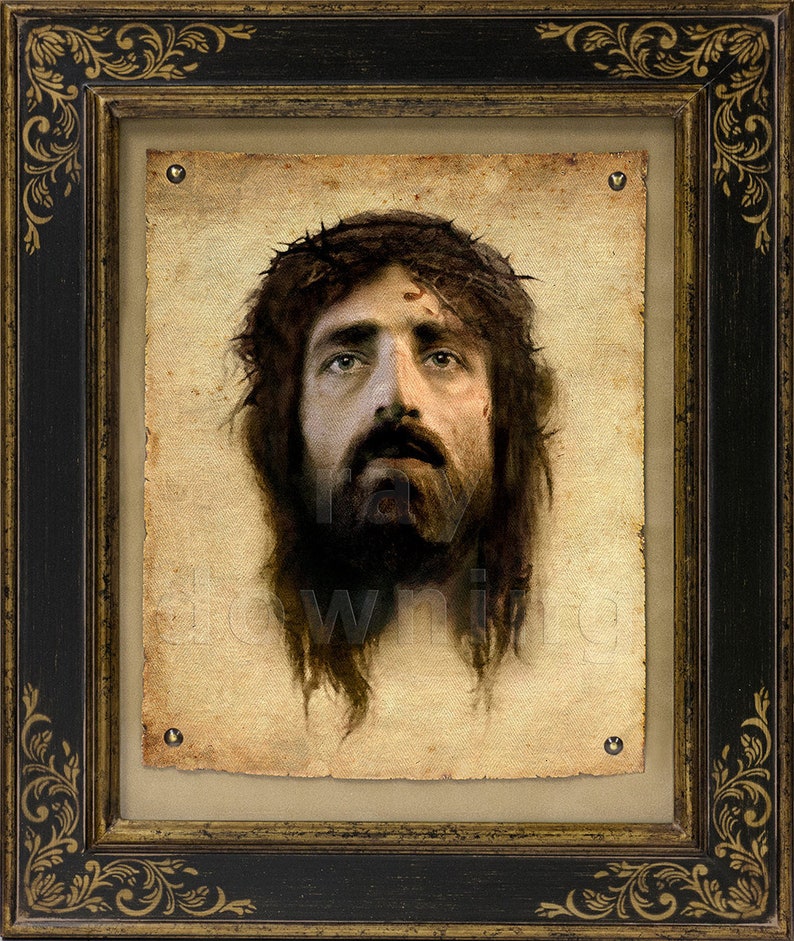

We have all, at some point, felt the frightening sensation of abandonment, and that is what we fear most about death, just as when we were children we were afraid to be alone in the dark and could only be reassured by the presence of a person who loved us. Jesus Christ, by remaining in death, passed beyond the door of this ultimate solitude to lead us too to cross it with him. What do these words mean? They mean that God, having made himself man, reached the point of entering man's most extreme and absolute solitude, where not a ray of love enters, where total abandonment reigns without any word of comfort: "hell". In this "time-beyond-time", Jesus Christ "descended to the dead". And the Shroud speaks to us precisely about this moment testifying exactly to that unique and unrepeatable interval in the history of humanity and the universe in which God, in Jesus Christ, not only shared our dying but also our remaining in death the most radical solidarity. Holy Saturday is a "no man's land" between the death and the Resurrection, but this "no man's land" was entered by One, the Only One, who passed through it with the signs of his Passion for man's sake: Passio Christi. And, in fact, this is really how it is: the darkest mystery of faith is at the same time the most luminous sign of a never-ending hope. And this reminds me of the fact that the Holy Shroud acts as a "photographic' document, with both a "positive" and a "negative". Yet the death of the Son of God, Jesus of Nazareth, has an opposite aspect, totally positive, a source of comfort and hope. We too have something to do with this darkness. After the two World Wars, the lagers and the gulags, Hiroshima and Nagasaki, our epoch has become increasingly a Holy Saturday: this day's darkness challenges all who are wondering about life and it challenges us believers in particular. We often repeat it in the Way of the Cross, perhaps without being fully aware of what we are saying.

This famous saying is clearly taken almost literally from the Christian tradition. Towards the end of the 19th century, Nietzsche wrote: "God is dead! And we killed him!".

The concealment of God is part of contemporary man's spirituality, in an existential almost subconscious manner, like a void in the heart that has continued to grow larger and larger. On the third day, he rose again".ĭear brothers and sisters, in our time, especially after having lived through the past century, humanity has become particularly sensitive to the mystery of Holy Saturday. In the Creed, we profess that Jesus Christ was "crucified under Pontius Pilate, died and was buried. God has died in the flesh, and has gone down to rouse the realm of the dead" ( Homily on Holy Saturday, PG 43, 439). Holy Saturday is the day when God remains hidden, we read in an ancient Homily: "What has happened? Today the earth is shrouded in deep silence, deep silence and stillness, profound silence because the King sleeps. From that moment, Jesus remained in the tomb until dawn of the day after the Sabbath and the Turin Shroud presents to us an image of how his body lay in the tomb during that period which was chronologically brief (about a day and a half), but immense, infinite in its value and in its significance. This is what the Gospel of St Mark says and the other Evangelists are in agreement with him. Having obtained permission, he bought a linen cloth, and after Jesus was taken down from the Cross, wrapped him in that shroud and buried him in that tomb (cf. At nightfall, since it was Parasceve, that is, the eve of Holy Saturday, Joseph of Arimathea, a rich and authoritative member of the Sanhedrin, courageously asked Pontius Pilate for permission to bury Jesus in his new tomb which he had had hewn out in the rock not far from Golgotha. Indeed it is a winding-sheet that was wrapped round the body of a man who was crucified, corresponding in every way to what the Gospels tell us of Jesus who, crucified at about noon, died at about three o'clock in the afternoon. One could say that the Shroud is the Icon of this mystery, the Icon of Holy Saturday. I thank God for the gift of this Pilgrimage and also for the opportunity to share with you a brief meditation inspired by the subtitle of this solemn Exposition: "The Mystery of Holy Saturday". I have stood before the Holy Shroud on various occasions but this time I am experiencing this Pilgrimage and this moment with special intensity: perhaps this is because the passing years make me even more sensitive to the message of this extraordinary Icon perhaps and I would say above all this is because I am here now as the Successor of Peter, and I carry in my heart the whole Church, indeed, the whole of humanity. This is a moment to which I have been looking forward.


 0 kommentar(er)
0 kommentar(er)
